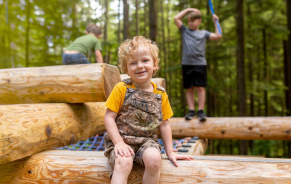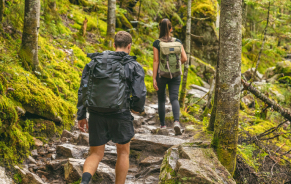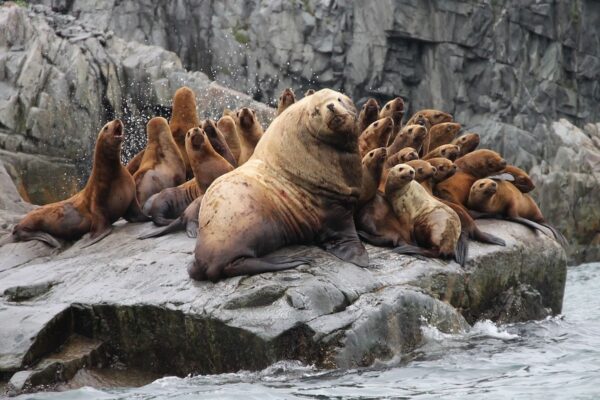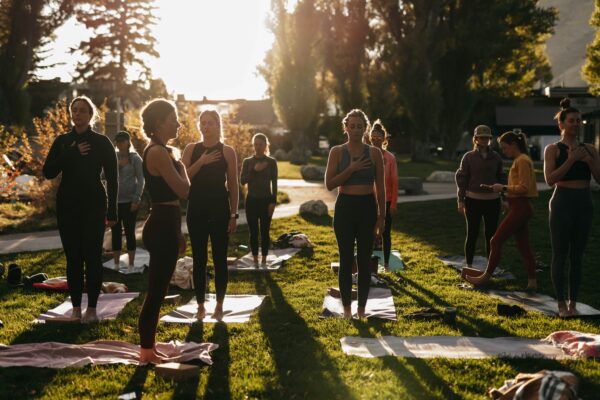Take a walk in the forests around Williams Lake and you might notice colourful shapes peeking out from moss, stumps, and fallen logs. These are mushrooms, and they’re not just fun to spot – they’re essential to the forest. Mushrooms recycle nutrients, help trees grow stronger, and even provide shelter for insects and small animals.
This guide is here to help you become a budding mycologist (that’s a scientist who studies fungi).
Where to Spot Mushrooms
Mushrooms thrive in damp, shady places. Around Williams Lake, you can find them:
- On Trails – Keep your eyes peeled along forest paths.
- On Dead Trees – Fallen logs and old stumps are mushroom hotels.
- After Rain – Mushrooms often pop up quickly after wet weather.
Important: In the Alex Fraser Research Forest, mushrooms are for observing only. Please don’t pick or collect them. Snap a photo or sketch instead!
Tips for Mushroom Identification
Before you head out into the forest on your journey to identify as many mushrooms as you can, there are a few ways you can really set yourself and your fellow adventurers up for success.
Start Small & Keep Track
Learn a few easy-to-recognize species first. Gradually expand your knowledge as you gain experience. Take note of what you see with photos and notes. A notebook, magnifying glass, and camera help you keep track of discoveries.
Respect the Environment
Pack out what you pack in and try to leave the forest better than you found it. Avoid disturbing ecosystems when you’re moving around so you don’t trample anything.
Look, Don’t Touch
While some mushrooms are edible, many of them are poisonous. As a best practice, look, photograph, sketch – but leave them where they grow.
Learn Together
Guided hikes, forest programs, and local groups like the Williams Lake Field Naturalists are a great place to start when learning about mushrooms in your area.

Glossary for Budding Mycologists
Before we dive into common mushrooms, here are a few words that mycologists use. Knowing these will help you describe what you see
- Gill – The thin, blade-like ribs under a mushroom cap. Gills release spores.
- Pore – Tiny holes under some mushrooms (instead of gills) where spores come out.
- Spore – Like seeds for fungi! Spores help mushrooms reproduce and spread.
- Cap – The top part of the mushroom, often umbrella-shaped.
- Stem (or Stipe) – The “stalk” that holds up the cap.
- Mycelium – The hidden web of fungal threads underground or in wood. The mushroom is just the fruiting body!
- Bracket Mushroom – Mushrooms that grow in shelf-like shapes on trees or logs.
- Mycologist – A scientist who studies fungi. (That could be you someday!)
Common Mushrooms in Williams Lake
Here are a few mushrooms you might see in the Cariboo region:
1. False Chanterelle (Hygrophoropsis aurantiaca)
Golden-orange and funnel-shaped as they age. Their narrow, forked “gills” are a giveaway.
Fun fact: They’re often mistaken for true chanterelles, but they’re a different species.
Habitat: Forests and even on woodchips in gardens.
2. Morels (Genus Morchella)
- Honeycomb caps with pits and ridges, and a hollow stem.
- Spotting tip: Morels often show up after forest fires.
- Habitat: Woodlands.
3. Oyster Mushrooms (Genus Pleurotus)
- Shaped like little shelves or fans, in shades of white, grey, or buff.
- Spotting tip: Look for clusters growing on old logs.
- Habitat: Decaying trees.
4. Shaggy Mane (Coprinus comatus)
- Tall white mushrooms with shaggy scales. As they age, they turn into black “ink.”
- Spotting tip: They look like they’re melting!
- Habitat: Lawns, meadows, and roadsides.
5. Turkey-Tail (Trametes versicolor)
- Thin, colourful fans with bands of brown, blue, orange, or even purple.
- Spotting tip: Check the underside to see tiny pores underneath.
- Habitat: Dead logs and branches.
6. Common Puffball (Lycoperdon perlatum)
- Round and white when young, turning brown as they age.
- Spotting tip: When mature, they release a puff of spores if tapped gently using a stick or twig.
- Habitat: Lawns, meadows, and woodlands.
7. Fly Agaric (Amanita muscaria)
- Bright red with white spots, this is the classic fairy-tale mushroom.
- Spotting tip: Poisonous, so admire from a distance.
- Habitat: Forest floor.
Want to see more? Check out the iNaturalist Cariboo checklist and add your own photos.

Tools for Young Mycologists
You don’t need much to get started, but a few tools make it more fun:
- A field guide or mushroom ID app (like iNaturalist or ShroomID)
- Camera or phone for photos
- Notebook and pencil for sketches and notes
- Weather-appropriate clothing, water, and snacks
For extra curious scientists: bring a magnifying glass to study details like gills, caps, and textures.
Learn with Wild & Immersive
Wild & Immersive in Williams Lake offers hands-on programs where you can explore fungi and other forest life. Keep an eye on our events page for upcoming courses and guided walks.





